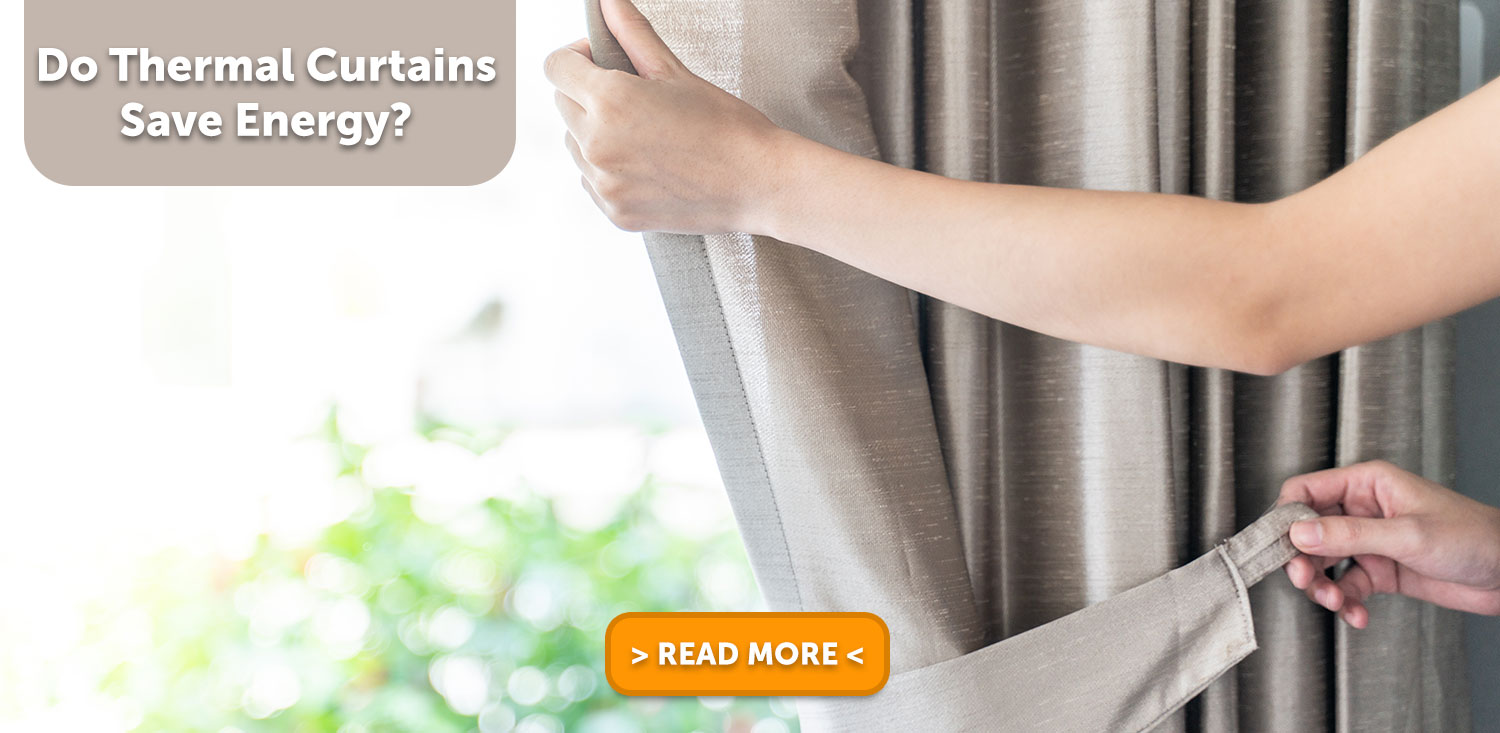Do Thermal Curtains Save you Money?

With the cost of energy on the rise at rates not seen in 50 years, it's become more important than ever to save energy this winter by keeping as much heat in the home as possible. One important way to do this is by having curtains with thermal properties. Studies have shown that approximately 30% of all heat loss in a building is through the windows, so improving the energy efficiency of windows can reduce your use of energy, lower bills and increase comfort.
Compared to window replacement, thermal curtains are a realatively inexpensive way of to control draughts, reduce heat loss by up to 25% in the winter and reduce solar gain by 33% in the summer.
What are Thermal Curtains?
Thermal curtains are made from several layers of material that provide thermal resistance and are usually constructed in 3 layers, although 2 and 4 layers are also common.
The face of the curtains is the design that will face into your room to coordinate with your decor and can be made from any fabric from polyester and cotton to linen and silk. The middle layer is made from a thick material like foam, felt, thick cotton batting or other thermally resistant material. The backing of the curtains will serve to protect the inner layer from sunlight.

How do Thermal Curtains work?
Thermal curtains create a space between the window and room which reduces the amount of heat transferred, so by installing an insulating pair of curtains over a window, heat is kept inside during the winter. During the summer, heat from the sun is reflected back outside.
Insulating materials are rated by R-values with higher values meaning a higher level of insulation. Insulated windows range from R-2 to R-7 while insulated walls can rate up to R-15. A standard pair of curtains rates at R-1 generally speaking, but a properly installed pair of thermal curtains can go up to R-6, which will significantly reduce heat loss.
How should Thermal Curtains be installed?
For Thermal curtains to be effective, they must be installed properly. The more airtight the space between the window and curtains, the higher the R-value, so when installing, they should be as close to the window as possible from top to bottom to the sides. Creating a proper seal around the window can reduced thermal transmittal by about 19%.
For maximum effectiveness, secure the curtains to the frame or walls with velcro, magnetic tape or hooks and the curtains should overlap generously in the middle to ensure no gap. To enhance the effectiveness of trapping the heat, use 2 or more layers of curtains.
During the winter, if you have a window that gets a lot of sunlight, open the curtains during the day when the sun is shining brightly. This will also help reduce the buildup of moisture from condensation on the window.
Are Thermal Curtains also Blackout Curtains?
Thermal curtains are generally not the same as blackout curtains. Blackout curtains are generally made of tightly woven material that prevents any light from passing through the fabric. The linings are usually thin and generally don't provide the same level of insulation. Some blackout curtains are constructed with insulating materials but this is usually the exception rather than the rule.
Shop our great range of Thermal curtains for this Winter and save on energy at home
https://guineys.ie/home/curtains/readymade-curtains/thermal-readymade-curtains.html